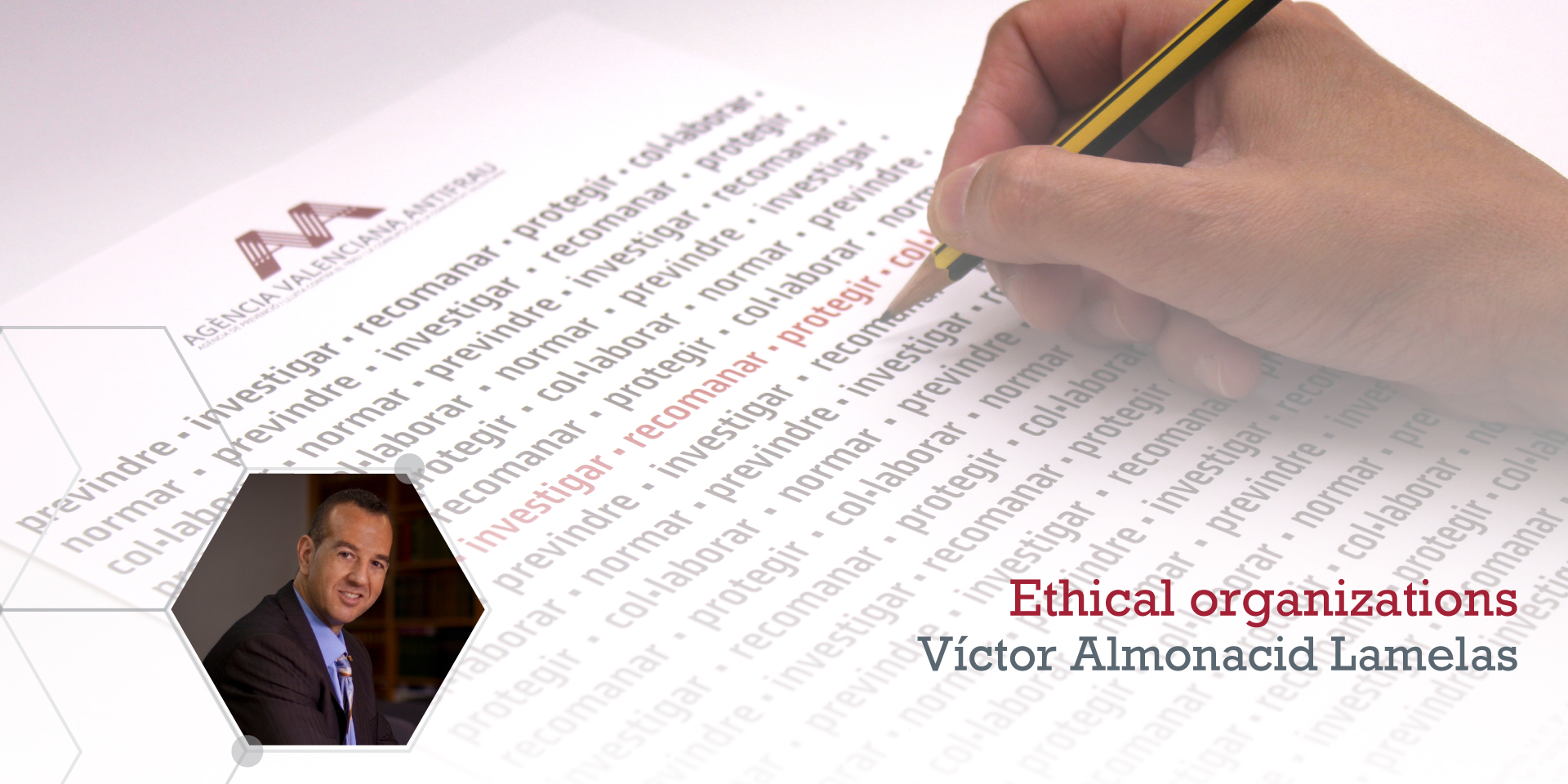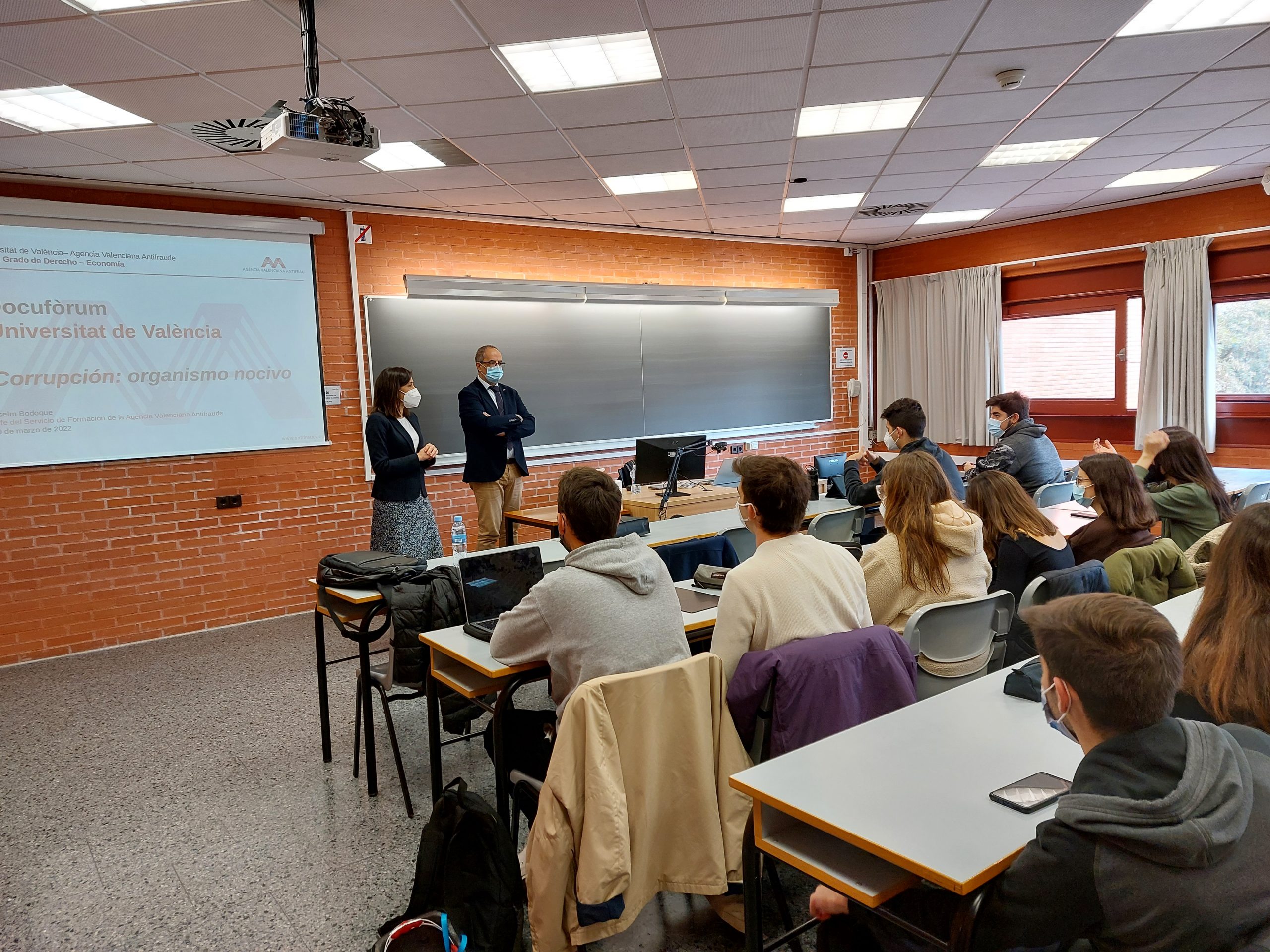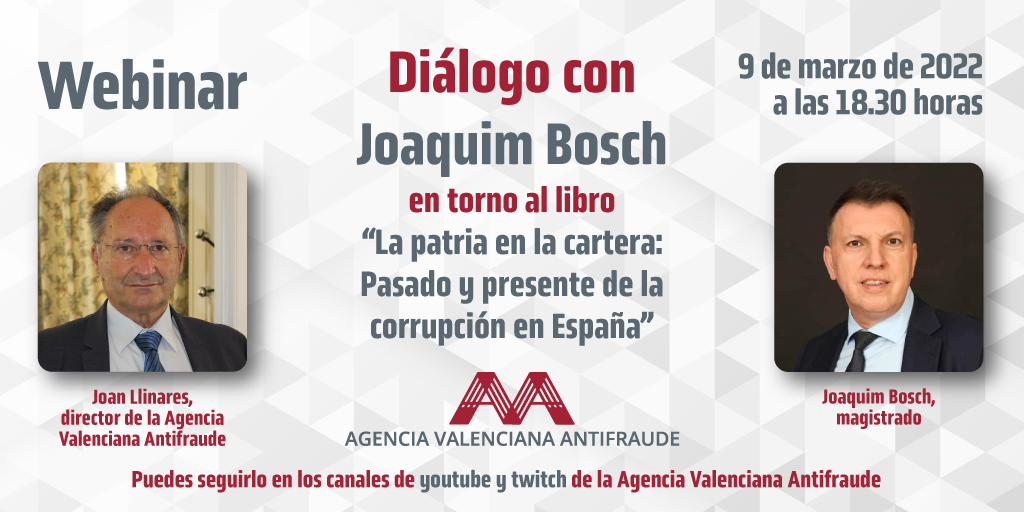“The first step in the evolution of ethics is a sense of solidarity with other human beings.”
(Albert Schweitzer)
An ethical organization is one that is designed so that its structure and operation fully correspond to the general interest, as well as to the principles of legality, objectivity, transparency, effectiveness and efficiency. In addition to the above, and also consequently, in an ethical organization, ethical public performance, the culture of public integrity and the development of the values that are its own are encouraged, projecting those values abroad. We highlight ten elements of ethical organizations:
1.- Well-formed electronic procedures. That the inner workings of an organization should be electronic is something that no longer offers any debate at the present time. This type of operation would cover both the procedures and the rest of the functional processes of the entity. The previous work of cataloguing, simplification and procedural reengineering is key. Debureaucratization is essential. From there, the electronic files are composed of electronic documents signed and / or sealed electronically, formed through electronic actions carried out within a reliable, traceable and traceable system that prevents or hinders to the extreme the possibility of cheating. All this finally ends in an electronic link that must comply with the legal requirements, and on which in turn the transparency and historical memory of the institution will be supported.
2.- Quality electronic services. This point refers to the external part of the electronic administration, referring mainly to the adequate configuration of the platforms for public use, although other instruments such as social networks or telematic attention could also be included. These platforms must allow an effective, intuitive, simple, effective and accessible use. Documents that are already in the possession of the Administration should not be requested, nor should data verifiable by it. In general, bureaucracy should be reduced as much as possible by incorporating responsible statements as far as possible. Excessive bureaucracy is a form of corruption. Priority should also be given to the use of identification systems, unless signature was legally essential. In addition, the various services must ensure compliance with national safety and interoperability schemes.
3.- Automation of simple processes. At this time, a certain degree of automation of certain actions would already be desirable, thus generating an improvement in agility and efficiency. Regulated procedures and acts allow for greater incorporation of this type of mechanism, given that they do not involve a value judgement. The main tool of automation is the electronic seal, especially the organ seal that is automatically stamped in place of the electronic signature of the employee or authority. The procedures, actions and documents to which it will apply must be identified in advance. Beyond the seals (entity, organ, time, etc …), the extraprocedimental operation of the entity must progressively incorporate algorithms, as an advanced programming tool and instrument of help in management, guaranteeing in its case the adequate human supervision especially in cases in which the weighting of the circumstances is necessary.
4.- Measures for the legalization of public procurement. Public procurement has been and still is one of the main focuses of corruption. Before going to any type of tender, the need report must be made. Unless otherwise justified in a specific case, a service that already corresponds to an internal department may not be contracted externally. Competition should be promoted, even in minor contracts, and at least a reliable record of all actions should remain in these contracts. Such information shall be published in accordance with the provisions of the Act. Greater planning will in any case avoid the proliferation of certain minor contracts that correspond to periodic and repetitive needs, and therefore foreseeable. It is also advisable to use so-called rationalization systems, such as purchasing centers or dynamic purchasing systems. The specifications of administrative clauses will contemplate the vicissitudes related to the execution of the contract, thereby reducing the conflict and judicialization, especially in large concessions and long-term contracts. Splitting and, as far as possible, modified splitting should be avoided. All phases of the life of a contract must be carried out through electronic means, especially the tender through an approved public or private platform that allows the encrypted presentation of the offers, but also the preparation, formalization, the administrative part of the execution and the invoicing. In a more advanced stage, the archiving and recording of all performances can be done through the use of blockchain technology.
5.- Active safeguarding of the rights of citizens. The legal system recognizes individuals, as such, rights of different kinds. After the seamless assurance of the free exercise of fundamental rights and, after these, those of democratic and social participation, the degree of development of the so-called administrative rights is relevant as a thermometer of an advanced society. The right of access to information is particularly important in our area. The Administration works for and for citizens. Users should not be left unattended in any way. The offices of citizen attention are currently called “assistance”, nomenclature that must be applied in its literal sense. Ex officio actions should not only be reserved for sanctioning procedures, but also for the recognition or authorization of pre-existing rights of persons who do not request them. Without prejudice to what is already indicated in the point dedicated to the tender, in general the legal procedures that correspond in each case must be adequately articulated and that ensure the concurrence and selection in conditions of publicity and equality (subsidies, selective processes, contracts, authorizations …) . Finally, the most modern dimension of people’s rights must be focused on social justice and sustainability (economic and environmental).
6.- Second generation transparency: open data. Publishing the information established by the Law is no longer enough. In any case, an organization is not transparent only because it has a portal, and much less if it is not fully electronic, accessible, interoperable and if the information it contains is not reusable. At this point we must mention again the right of access to information, the safeguarding of which marks the difference between theoretical and real transparency. Likewise, the concept of “Open Government” must be considered in all its dimension: active publicity, access to information, accountability, and effective participation and collaboration. The so-called “good governance” is transversal, since it is based on a series of values to which we refer later. Assured all of the above, the element to work on is the data. Technology (mobiles, sensors, customer experience, etc …) constantly offers us millions of data of public utility. Some are confidential, not only because they contain personal information, but for any other legal reason. The rest can be offered for public knowledge and use. Their usefulness is multidimensional, since they favor aspects as diverse as the economic initiative of entrepreneurs or the very strengthening of democracy. Obviously, the Administration itself can and should also use that data to reconfigure and improve its services.
7.- Adequate internal organizational structure. Certain organizations seem purposely designed to be slow and inefficient. Inefficiency, moreover, has a good chance of becoming corruption or fraud. If we know that the contracting of an ordinary service or supply is not able to be managed in less than three months, it is very likely that we will try to go to some other more agile figure, even if it is less legal. Such illegality would not be motivated so much by the animus of favouring a private interest or of contravening the law, as by the desperation of not being able to satisfy an immediate public need in a short period of time. The origin of slowness in management can be perfectly functional or bureaucratic (self-bureaucracy), but also organizational. In these cases, an essential element in avoiding the problem is the establishment of agile reorganization mechanisms, and the job listings and organizational charts must most likely be updated. No service can be improved without changing internal organisational instruments. With the passage of time and events, certain jobs are out of print, while others should be redefined or created. At the top, with respect to the so-called “high positions”, the ideal is an adequate proportion and interrelation of political and managerial positions, the latter should be professionals, not eventual appointed by affinity. As for the departments, the current circumstances show us that some of them have been oversized or even obsolete, while others are saturated or simply do not exist being necessary, therefore the latter must be equipped or created. In any case, transversality, horizontality and teamwork must go beyond the classic vertical and departmentalized scheme. At present we manage rather problems or situations and not so much files. And problems are solved by well-communicated and coordinated multidisciplinary teams.
8.- Planning/resilience. These two words are related, since in some ways resilience is the consequence of planning. The pandemic highlighted the lack of both by a large majority of our public organizations, much more focused on dispatching the urgent than the important, without a culture of planning and much less of measurement, and of course imposing on public employees a system of work by schedule disconnected from performance. At that moment a great opportunity was missed . The work for objectives should have come hand in hand with teleworking. As for the “high planning”, the strategic one, perhaps it has been called into question by recent events, which clearly distance us from the long-term approach. However, we must not give up having a solid and stable institutional strategy, a mission, a vision, within which we will fit the plans and the short-term measures.
8.bis.- Budget execution capacity. This aspect must be a subpoint of the previous one, because not in vain the Budget is the annual plan par excellence. The ability to execute the entire budget within the year is one of the main measures of the aforementioned principles of effectiveness and efficiency. It is not possible to attribute good management to those who are not able to spend all the money they budget, since the expenses correspond to the services to be developed and the objectives to be met. Non-execution is therefore identified with non-compliance. Obviously, the underlying reason for this inability is almost always or most likely related to the functional inefficiency already mentioned, which, as we see, has both internal and external consequences.
9.- Innovation. Non-innovation means defending a status quo that, over the years, always becomes obsolete. Even methods that work well for a long time need to be updated, especially in times of greatest social change, such as the current one. Not wanting to change is equivalent to not wanting to improve. Consequently, non-innovation is an unethical position and very given to the maintenance of certain “chiringuitos”. On the other hand, true innovation, although it involves changes, must be oriented to improvement (which is the objective), not to change itself (which is the instrument). In fact, many times it simply involves introducing a few changes, punctual, strategic and of great relative impact. Innovation is not about turning everything upside down, since total changes are extremely difficult to manage, and many times they are not necessary either. Innovating is a way of being, thinking and acting on the part of modern organizations, having to be less and less rigid and more liquid. Flexibility is adaptation, and adaptability becomes resilience.
10.- Strong ethical roots of public employees. The vocation of public service must be the true motivation, the strongest belief, the firemark of public employees. In ethical organizations there is a strong interiorization of the principles inherent in the new public management, such as those of simplicity, clarity, proximity, transparency, rationalization, effective service to citizens, agility, good faith, legitimate expectations, institutional loyalty, responsibility in management, baking and direction by objectives, adequacy of means to the ends, cooperation and collaboration, proportionality, evaluation, empathy in dealing with other people, gender equality. All this in line with the Sustainable Development Goals. Add the total political independence. The service must always be understood as focused on the general interest, without nuances or exceptions. Whoever is most attracted to the pursuit of particular interests has the very legitimate option of working in private enterprise. Of course, the private-private, because a mercantile of public capital is “public sector”. Let’s see if we find out at once.
Víctor Almonacid Lamelas. Director of Prevention, Training and Documentation of the Valencian Anti-Fraud Agency.






